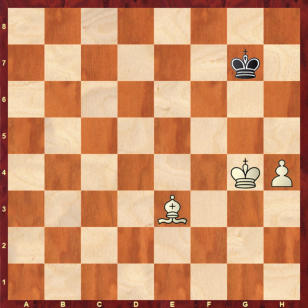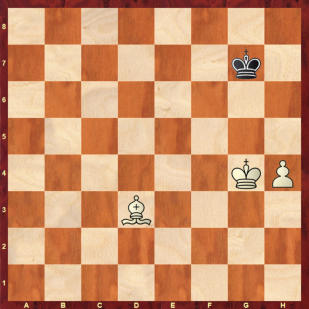WIGSTON CHESS CLUB
Theoretical endgames - the 10 endgames you
should know
Martin Burrows, 31 January 2025Part three: Some other key endgames
7. Queen v Pawn: The winning technique
A pawn race often leads to a situation where one side has a Queen and the other has a pawn on the 7th rank. The position is winning against a centre or knight pawn.8. Queen v Pawn: Rook and Bishop pawns draw
Unless the white King is close enough to assist in a mating attack, these positons are drawn due to stalemate ideas. Firstly, we consider the Rook pawn. The defence with the bishop pawn uses a similar stalemate idea.9. Bishops of opposite colours
Usually, two extra pawns are sufficient to win an endgame. However when the bishops are on opposite colours there are more chances of a draw due to the possibility of setting up an unbreakable blockade. The example below shows how to draw against 2 connected passed pawns.
10. Rook pawn with a bishop
In the example on the left the bishop controls the queening square and the positon is easily winning. However, somewhat surprisingly, the position on the right is a draw. Black just shuffles his King around the corner g7/g8/h7/h8 and there is no way to shift it. The best white can do is force a stalemate.

The finish to the game below shows how this idea can be used to defend an endgame. It also illustrates that the position is only a draw if the
King can make it back to the defensive corner in front of the pawn.













